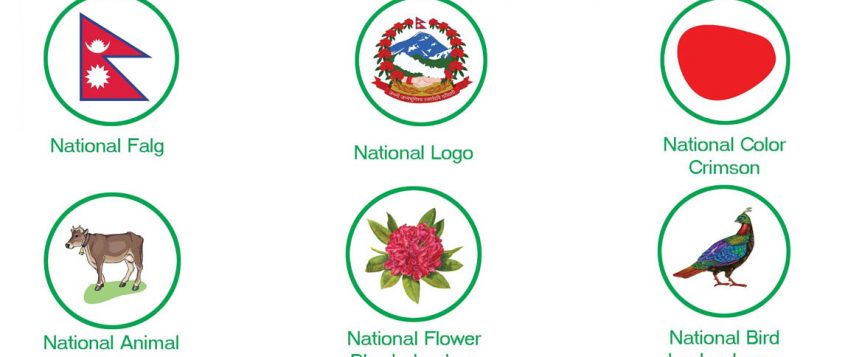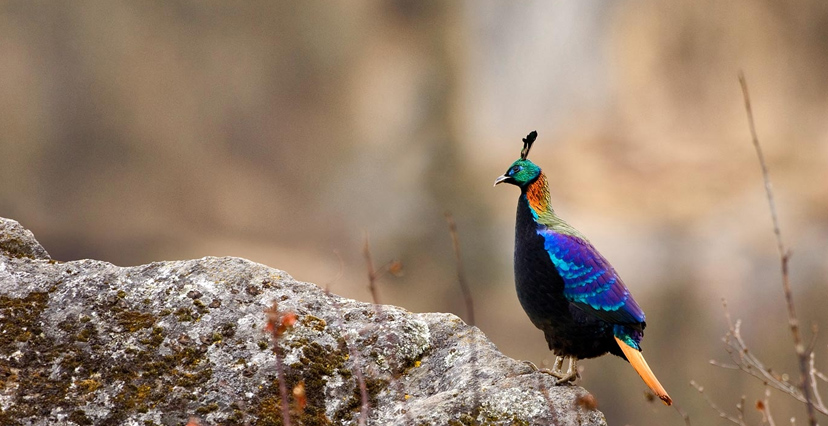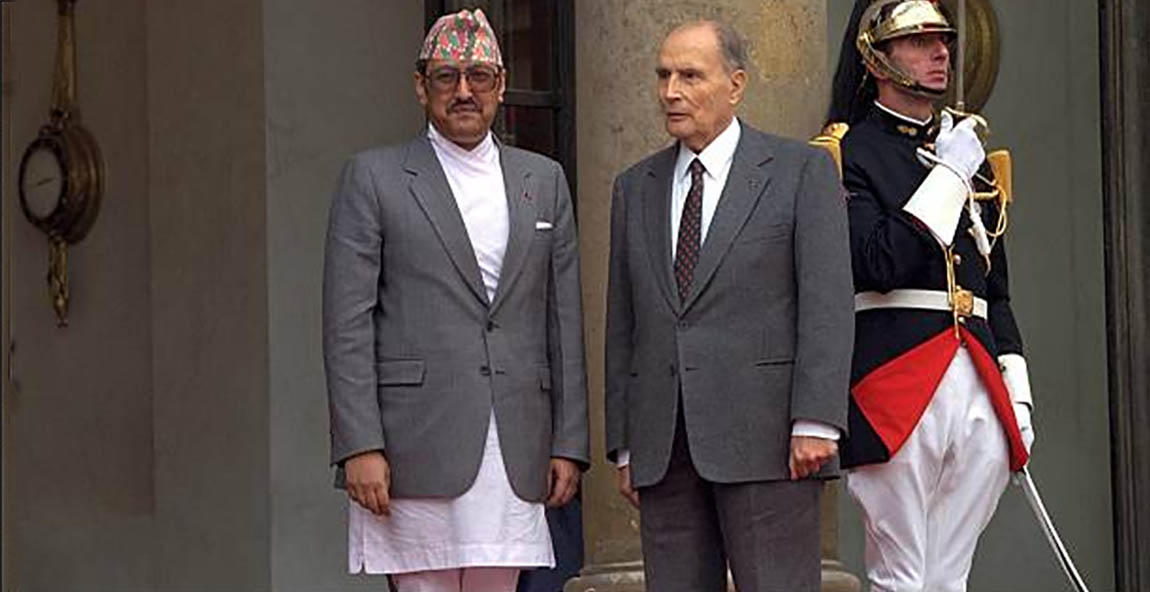National Symbols of New Nepal

Nepal, officially the Federal Democratic Republic of Nepal, is a landlocked sovereign state located in South Asia between two mighty countries; China at north and India at east, west and south. The national symbols of Nepal are:
Bird

The Himalayan monal (Lophophorus impejanus) also known as the impeyan monal, impeyan pheasant or danphe is a bird of the genus Lophophorus of the pheasant family, Phasianidae. It is the national bird of Nepal, where it is known as the danfe in Nepali.
Emblem

The coat of arms of Nepal was changed during the reconciliation period following the Nepalese Civil War. On 30 December 2006, a new coat of arms was introduced. It contains the flag of Nepal, Mount Everest, green hills symbolising the hilly regions of Nepal and yellow colour symbolising the fertile Terai region, male and female hands joining to symbolise gender equality, and a garland of rhododendrons (the national flower). Atop this is a white silhouette in the shape of Nepal.
Flag

The national flag of Nepal (Nepali: नेपालको झण्डा) is the world’s only non-quadrilateral national flag. The flag is a simplified combination of two single pennons, the vexillological word for a pennant. Its crimson red is the colour of the rhododendron, the country’s national flower. Red is also the sign of victory in war. The blue border is the colour of peace. Until 1962, the flag’s emblems, the sun and the crescent moon, had human faces. They were removed to modernize the flag.
Dress

Daura-Suruwal is a national costume of Nepal, which is worn by males. It is mostly worn by peoples of rural areas and on special ceremonies with a cap called Dhaka Topi in Nepali.
National Anthem
- सयौं थुँगा फूलका हामी, एउटै माला नेपाली
- सार्वभौम भई फैलिएका, मेची-माहाकाली।(2)
- प्रकृतिका कोटी-कोटी सम्पदाको आंचल
- वीरहरूका रगतले, स्वतन्त्र र अटल।
- ज्ञानभूमि, शान्तिभूमि तराई, पहाड, हिमाल
- अखण्ड यो प्यारो हाम्रो मातृभूमि नेपाल।
- बहुल जाति, भाषा, धर्म, संस्कृति छन् विशाल
- अग्रगामी राष्ट्र हाम्रो, जय जय नेपाल।
|
|
| English translation |
|---|
|
Animal

Cows are the most common type of large domesticated ungulates. They are a prominent modern member of the subfamily Bovinae, are the most widespread species of the genus Bos, and are most commonly classified collectively as Bos primigenius. Cows are not raised as livestock for meat (beef and veal), but as dairy animals for milk and other dairy products, and as draft animals (oxen or bullocks) (pulling carts, plows and the like). The national breed Achham cattle which falls in the Bos indicus species is understood to be the national animal.
Flower

Rhododendron (Nepali: लाली गुराँस; lali gurans) is a genus of over 1000 species of woody plants in the heath family, either evergreen or deciduous. Most species have showy flowers.
Language

The national language of Nepal is Nepali language.Nepali or Nepalese (नेपाली) is a language in the Indo-Aryan branch of the Indo-European language family. It is the official language and de facto lingua franca of Nepal and is also spoken in Bhutan and parts of India. In India, it is one of the country’s 2nd official languages: Nepali has official language status in the formerly independent state of Sikkim and in West Bengal’s Darjeeling district. Nepali developed in proximity to a number of Tibeto-Burman languages, most notably Kirati and Gurung, and shows Tibeto-Burman influences.
Color

Crimson is a strong, bright, deep reddish purple color.
Source: Wikipedia
Post a comment
You must be logged in to post a comment.

